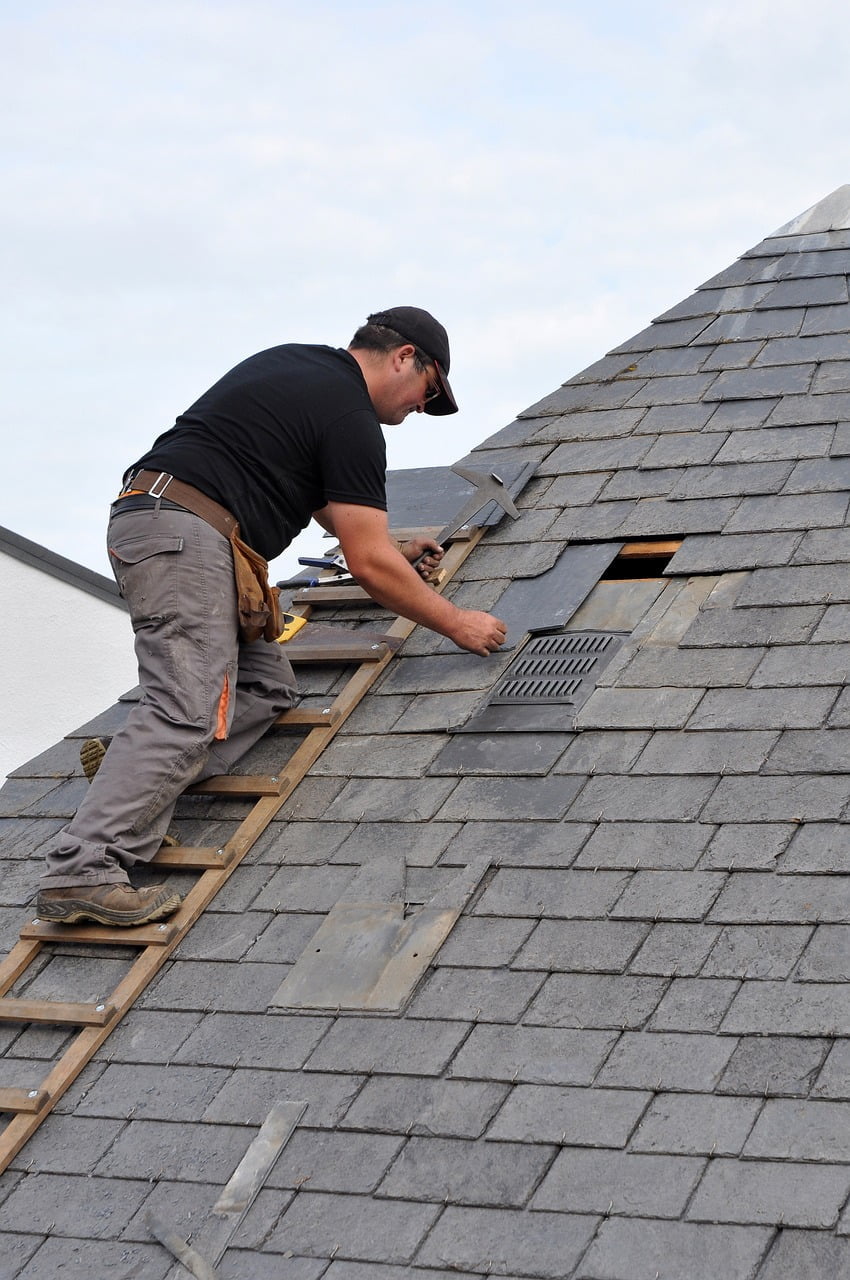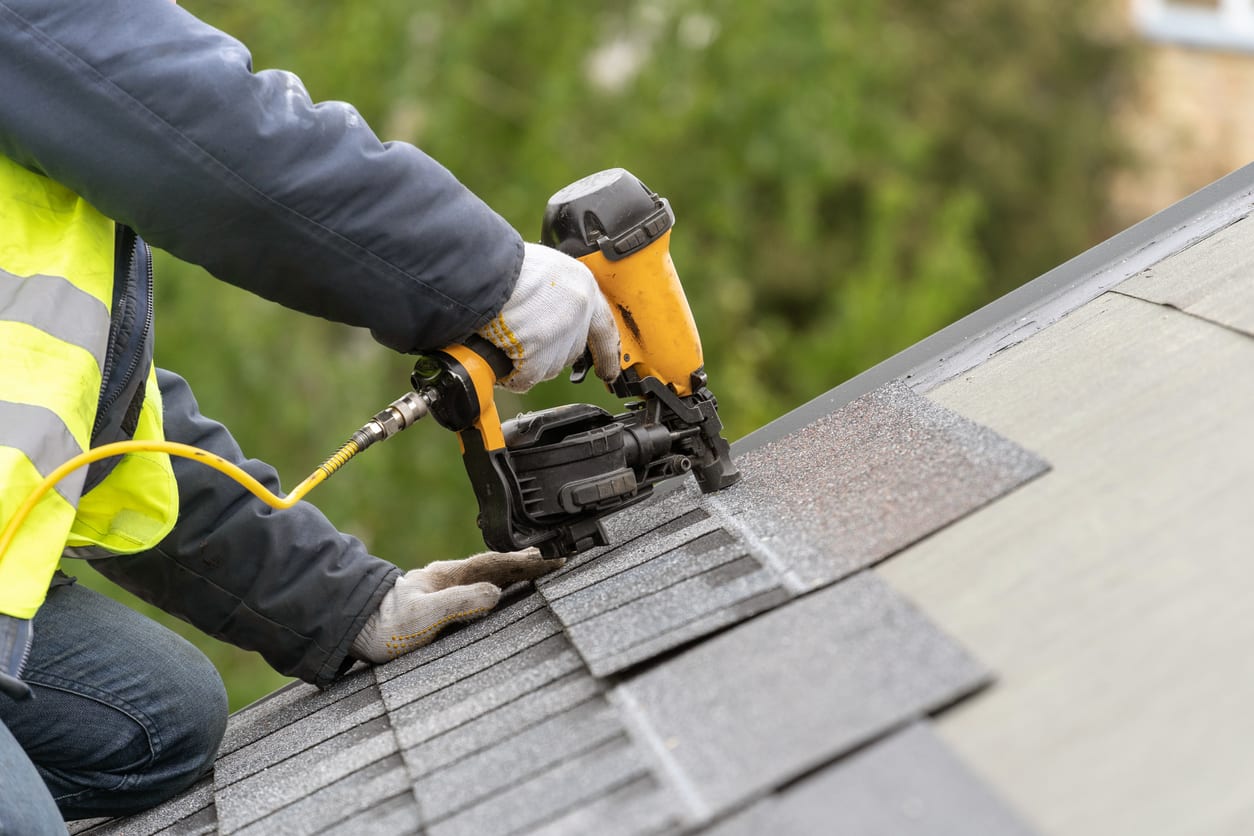Seasonal Roofing System Repair Service Checklist: Prepare Your Roofing System for each Weather
As a home owner, you recognize the significance of securing your financial investment, and your roof plays a crucial duty because. Each season brings one-of-a-kind obstacles that can impact its honesty. By adhering to a seasonal roofing repair checklist, you can stay in advance of potential concerns. From winter months ice dams to summer warm, each action is considerable. Allow's check out just how appropriate maintenance can protect your home and extend your roof's lifespan.
Inspecting Your Roofing System for Winter Season Readiness
As winter months approaches, it's important to inspect your roof to verify it can endure extreme weather. When snow and ice collect, Begin by examining for missing out on or damaged shingles; even a little issue can lead to significant leakages. Next off, take a look at the blinking around vents and smokeshafts-- this location is commonly prone to water intrusion.
Do not fail to remember to look for indicators of sagging or unequal surfaces, as these may indicate architectural problems. Additionally, confirm your gutters are clear; stopped up seamless gutters can cause ice dams that harm your roofing system.
 roof repair
roof repair
Springtime Cleansing: Cleaning Particles and Monitoring for Damages
As soon as winter's hold launches, it's time to tackle spring cleaning on your roof covering by removing particles and inspecting for any kind of damage. Start by inspecting your roof for fallen branches, leaves, and various other debris that can trap dampness and create rot. A tidy roofing advertises better water drainage and avoids mold and mildew growth.
Next, get hold of a tough ladder and carefully examine roof shingles for splits or missing items. Pay focus to locations around smokeshafts and vents, as these areas are vulnerable to leaks. Do not neglect to analyze your seamless gutters, ensuring they're totally free from obstructions that might bring about water merging.
While you're up there, seek indications of wear, like rust on steel blinking or loosened seals around skylights. Resolving them now can conserve you from pricey repair services later on if you spot any concerns. A little springtime cleaning goes a long means in keeping your roofing's integrity.
Summertime Heat: Analyzing Your Roof for Heat-Related Issues
As summer season warm magnifies, it's essential to inspect your roof for heat-related issues. Look for any tile damage, seek indications of warmth buckling, and assess just how well your roof covering aerates. Taking these actions now can prevent larger troubles in the future.
Check for Tile Damage
 roof repair
roof repair
Look For Warm Buckling
Heat buckling is a typical concern that can emerge throughout the scorching summer season months, and it's important to check for it on your roof covering. Start by checking your roof aesthetically; look for any type of unequal surface areas or raised edges. If you detect any indications of warm fastening, it's crucial to resolve them immediately to protect against further damage.
Evaluate Roofing Ventilation Effectiveness
After examining for warm fastening, it is essential to review your roofing's ventilation performance. Appropriate air flow helps control temperature level and wetness, stopping damages from too much heat. Begin by examining your vents; see to it they're not obstructed by particles or insulation. Look for indicators of poor airflow, like warmth accumulation in your attic room or distorted roof materials. You could additionally wish to check if your soffit vents and ridge vents interact effectively. If your home feels stale and overheated, consider upgrading to more reliable air flow systems, like powered attic room followers or added soffit vents. Bear in mind, preserving excellent ventilation not just extends your roof covering's life however additionally improves your home's total energy effectiveness, guaranteeing comfort throughout those warm summer season.
Rainy Season Preparedness: Making Certain Correct Water Drainage
As the wet period approaches, you require to assure your roof covering's drain system prepares to deal with heavy downpours. Begin by checking your downspouts and gutters, and ensure they're free from particles. Do not neglect to examine the blinking and seals to avoid leakages and water damages.
Check Downspouts and seamless gutters
Beginning by examining for any type of noticeable particles, like fallen leaves or twigs, that can block the flow of water. Next, examine the downspouts for blockages or damages; a blocked downspout can cause water to overflow, possibly destructive your roofing system and foundation. If you identify any problems, resolve them immediately to protect against costly repair work.
Clean Roofing Surface Area Debris
Use a roof covering rake or mop to delicately get rid of particles, being careful not to harm the tiles. After cleaning, check your roof after hefty rainfalls to spot any kind of possible issues early. Keeping your roof clear of particles is vital for protecting against costly fixings down the line.
Check Flashing and Seals
After removing your roof covering of debris, take a better check out the blinking and seals around vents, chimneys, and skylights. These locations are important for protecting against leakages during the wet season. Check the flashing for any signs of corrosion, fractures, or spaces. If you see any damages, it's important to repair or replace it quickly. Next off, examine the seals; they should be tight and intact. Try to find roof repair gainesville ga any peeling or damaged locations that could allow water to permeate in. If you find any jeopardized seals, take into consideration resealing them with a high-quality roofing sealer. Guaranteeing these elements are in great problem will certainly aid preserve correct drain and protect your home from water damages throughout hefty rainfall.
Checking and Preserving Roof Seals and Flashing
While it may seem very easy to ignore, keeping and checking roofing system seals and blinking is vital for stopping leakages and water damage. Beginning by examining the seals around vents, chimneys, and skylights. Search for any kind of cracks, gaps, or indicators of wear. If you find any type of problems, it's ideal to reseal them with proper roof sealer to assure a limited fit.
Next, analyze the blinking, which routes water far from crucial locations. Look for rust, loosened areas, or bent sides. If you locate any kind of broken blinking, replace it or secure it effectively to preserve its honesty. Remember, also a little imperfection can lead to substantial problems in the future.
Last but not least, don't forget to cleanse off any debris that might obstruct the seals or blinking. Keeping these components in excellent form will assist safeguard your roof covering against the aspects and extend its life expectancy.
Gutter Maintenance: Maintaining Water Moving Smoothly
Given that your gutters play a crucial role in directing rain away from your home, normal maintenance is critical for preventing water damages and structure issues. A blocked rain gutter can lead to water overflow, which may damage your roof covering and siding.
If you discover any type of damage, fixing or change the damaged parts without delay. Verify downspouts are directing water at the very least 6 feet away from your foundation.
Lastly, inspect that your rain gutters are appropriately sloped, ideally a quarter inch for every single ten feet. This incline warranties water flows efficiently towards the downspouts. Routine upkeep will keep your gutters operating effectively and protect your home from costly repair work.
Setting Up Expert Evaluations for Comprehensive Care
Routinely organizing professional assessments is necessary for maintaining your roof's stability. This timing allows you to resolve any type of damage triggered by winter season weather or summer season tornados.
Throughout examinations, professionals will certainly analyze tiles, flashing, and ventilation, making certain whatever's in leading form. They'll also look for signs of wear, leakages, top roofing companies Gainesville GA or mold and mildew, which you could ignore. Scheduling these evaluations not just prolongs your roof covering's life expectancy however likewise provides you peace of mind.
If you're not sure regarding the condition of your roofing system, do not hesitate to call a specialist. Spending in these exams now can save you a lot later. Prioritize your roof covering's wellness, and you'll be well-prepared for whatever climate comes your method.
Frequently Asked Inquiries
Exactly how Frequently Should I Examine My Roof Covering Throughout the Year?
You must check your roof covering at the very least twice a year, ideally in spring and autumn. After extreme weather condition events, check for damages too. Regular evaluations assist you capture concerns early and conserve money on fixings.
What Indications Show I Need a Roofing Substitute Instead of Repair Work?
 roof repair
roof repair
Can I Execute Roofing Repairs Myself, or Should I Employ a Specialist?
You can perform minor roof repairs on your own if you're comfortable with heights and standard tools, but hiring a professional guarantees security and appropriate job. Do not take the chance of damage; it could be worth the investment for tranquility of mind.
What Are the most effective Materials for Roofing System Repair Works in Different Environments?
For different environments, you'll want materials like asphalt shingles for moderate areas, steel roof covering for extremes, and clay ceramic tiles for hot areas. Always consider regional weather condition patterns to ensure your roof stands up to the aspects efficiently.
How Do Roofing System Warranties Impact Seasonal Upkeep Responsibilities?
Roofing system service warranties commonly define maintenance responsibilities, so you'll require to review the terms. If you do not keep your roofing as required, you might invalidate the warranty, leaving you in charge of pricey repairs.
Seasonal Roofing Repair Service List: Prepare Your Roof Covering for Every Climate
When winter season's grasp launches, it's time to deal with springtime cleansing on your roof covering by removing away debris and inspecting for any damages. Examine for any roof shingles damage, look for indications of heat buckling, and examine how well your roofing ventilates. If you detect any kind of concerns, take into consideration getting in touch with a professional for repair work to keep your roof covering in leading shape and secure your home from potential water damage.
While it might seem simple to forget, preserving and checking roof seals and flashing is crucial for stopping leaks and water damages.